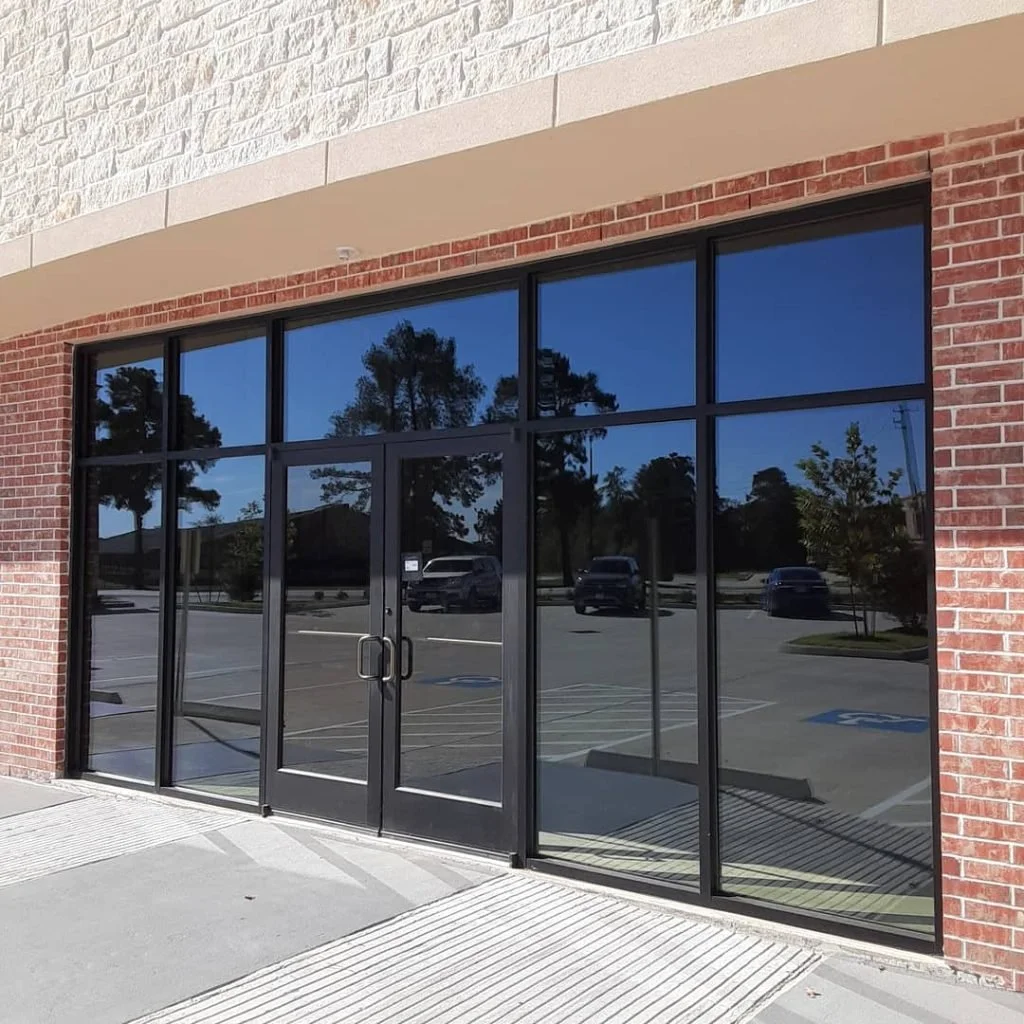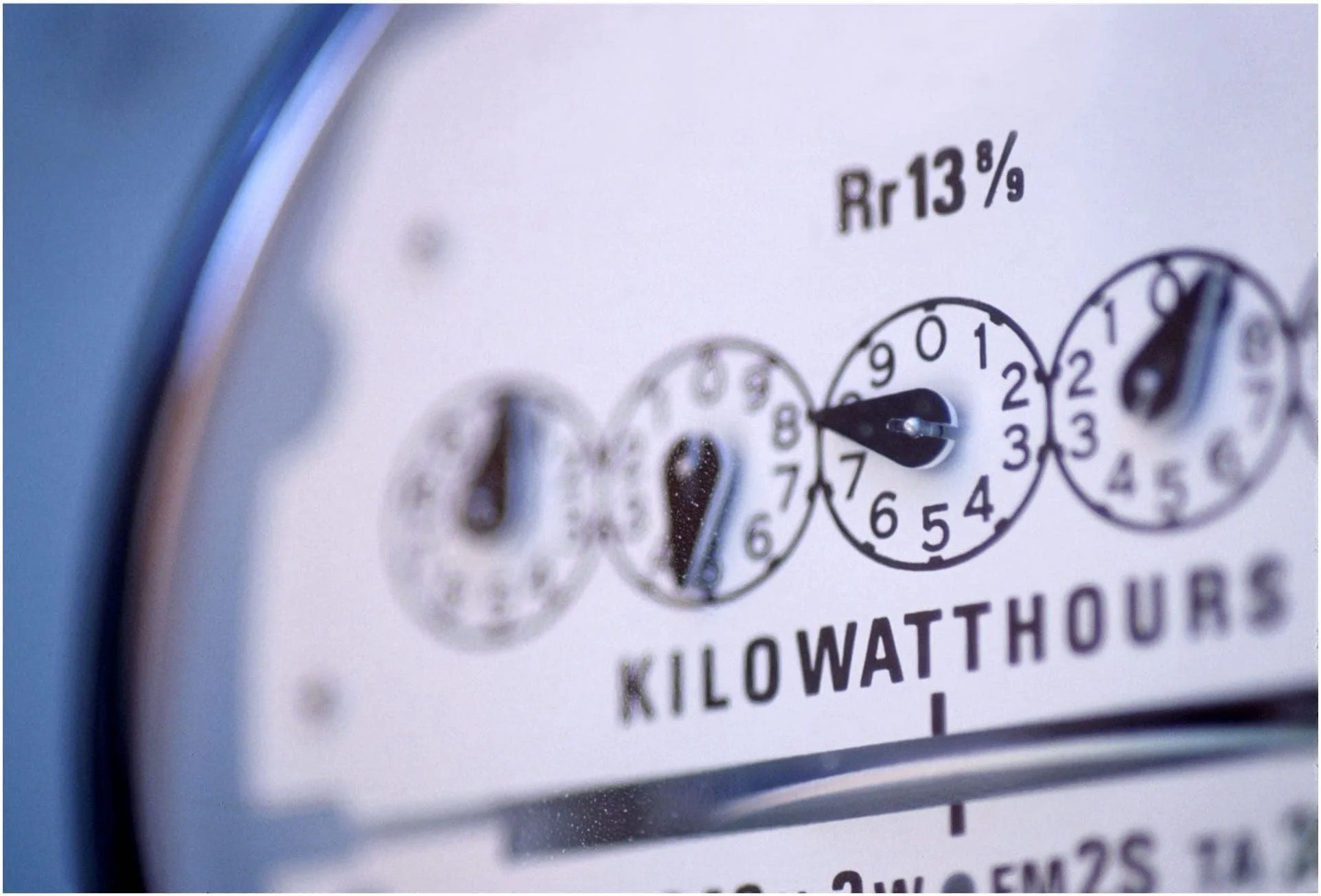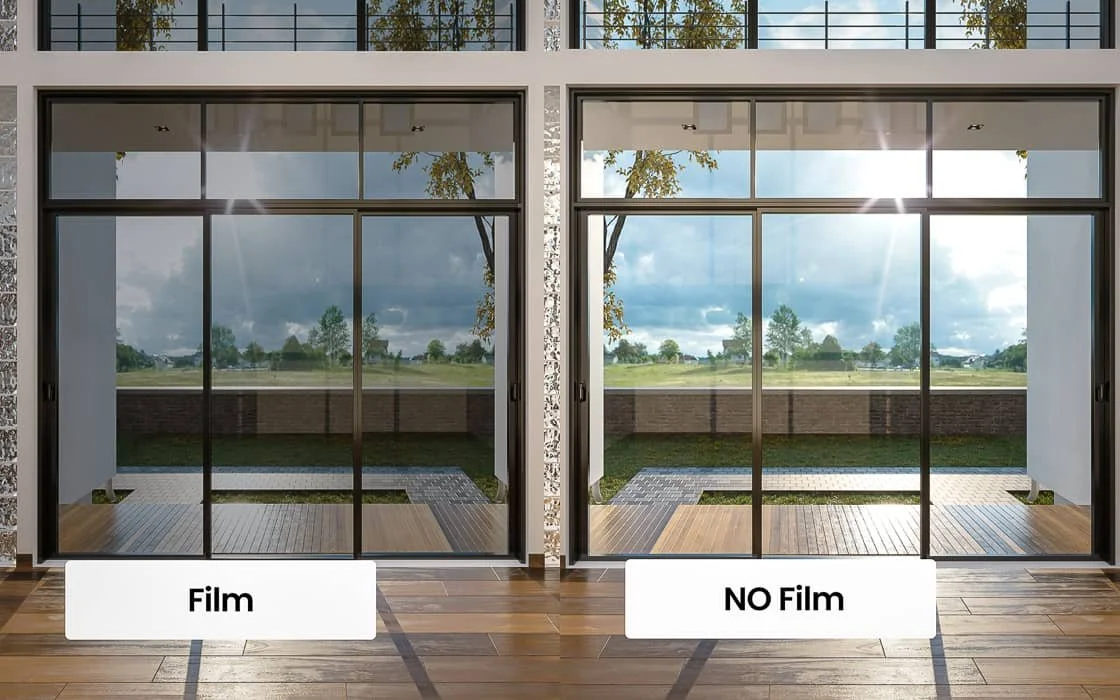Window Tinting Commercial Buildings
improved Aesthetics
Adding window tinting film to your commercial building’s glass is a simple way to give your property a facelift. You can choose from various tints to give your property a clean, modern, finished look.
This can be especially beneficial for older office buildings that are starting to look outdated. Dark black, colored, or mirrored window films can instantly change your commercial property’s entire outward appearance and make it look more contemporary and attractive.
Heat blocking, insulating, and temperature control window films can make a huge difference in building tenants’ indoor comfort. These special types of tinting films help rooms stay cool when it’s hot outside and warmer when temperatures are cold.
When you tint your business’s windows with temperature control window films, building occupants will benefit from more comfortable year-round working environments, leading to higher productivity. There will also be less reliance and strain on your building’s HVAC systems.
Reduces solar heat by up to 83%
Up to 9 degrees cooler standing near a filmed window
More Comfortable Environment
Added Privacy
In addition to improving the aesthetics of a commercial building, dark or mirrored window films also add an extra layer of privacy to your windows.
This is helpful when your employees need to work discreetly away from prying eyes or when you want to keep expensive equipment out of sight
UV Blocking
UV blocking window films can keep out up to 99% of the sun’s harmful UV rays that people can get exposed to through standard window glass. This protects building tenants’ eyes and skin against dangerous ultraviolet damage resulting from prolonged sun exposure through windows near their desks or workspaces.
Rejects up to 99% of ultraviolet rays
One of the most significant benefits of window tinting for businesses is the potential for reduced energy use, which means lower utility costs. Suppose you choose to install Campbell’s highest performance, energy-efficient window films. You can essentially turn a single-pane window into a double or a double-pane window into a triple - in terms of performance increases.
Choosing low-emissivity, or Low-E window film, means that your investment will eventually pay for itself. Before you commit, a computerized analysis can show you anticipated energy savings for your property and even plot an ROI timetable.
Saves up to 19 kWh of energy per square foot on single-pane glass and 12 kWh of energy per square foot on double-pane glass
Cuts up to 10% from your total monthly utility bill
Low-e window film can pay for itself in as little as 3 years
Energy rebates can provide additional savings
Lower Energy Usage
Reduced Glare
Another problem that can hurt productivity in an office or other commercial space is excessive glare from the sun. Not only can this glare distract workers, but it can also cause harmful eye strain due to employees squinting when they’re trying to look at computer screens under harsh glare for hours at a time.
One of the great benefits of window tinting for an office or other business type is that it can block out significant amounts of glare without blocking out the natural light. This means there is a reduced need for less convenient solutions, such as closing curtains and blinds which can lead to an increased demand for artificial light.






